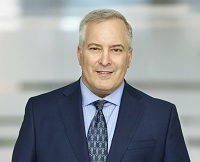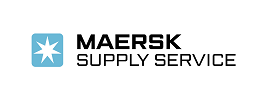
Author
Mark Handin, COO
Focus on our people, fleet digitalisation and customer collaboration have helped us develop solutions to minimise the impact of COVID-19.
When I joined Maersk Supply Service in March of 2020 – it was just days before the Coronavirus pandemic really grew, in perception, into a global crisis. Almost overnight, it seemed to hit the global economy – and of course, the OSV sector. As the incoming COO, this forced me to “hit the ground running”, as I quickly jumped into the company’s COVID-19 response with our very capable team.
The last 12 months have really been uncharted waters, with the “perfect storm” of factors hitting our industry. The precipitous drop of activity (demand), combined with a significant increase in operational challenges (crew change travel disruptions, quarantines, supply chain delays, etc.), created a set of difficult circumstances not seen in the market before. Maersk Supply Service had our share of difficulties, but we tried to keep the mindset that these issues were simply ‘challenges to overcome’ with a goal to mitigate their effects to the best of our ability.
The overall goals and objectives have remained – to take care of our people, keep our vessels operating at a high standard and with exceptional service quality. Above all, the resiliency of our people, not the least, our seafarers, has given me a sense of pride throughout the year and a sense of optimism as we look forward.
Addressing the challenges of COVID-19
Many of our biggest challenges have been related to crew change and/or supply chain disruption. It became apparent early on that – despite efforts from governments, NGOs and other external parties – it would often be up to us to find our own solutions to these problems. In the supply chain, we explored three main areas. We began to look at strategic stockpiling, strengthening our existing supplier relationships, and working on local options to source parts and services when all else failed.
With respect to crew change and generally looking after our seafarers, we had to think creatively. What sorts of alternative modes of transportation could we use for crew changes? Was it possible to extend rotations? How could we focus on the fleet as a whole? In general, our seafarers were very understanding when prolonged sea service was needed. We also had some success collaborating across brands on crew change issues, with at least one case of a shared charter flight (together with Maersk Drilling) where a commercial option was not available. We also had success in mobilising seafarers as supernumeraries on our own vessels – to join other MSS vessels on arrival in foreign ports (where legally permissible). I was impressed by the overall patience, support and understanding of our seafarers during difficult times, with communication playing a key role. While far from perfect, we tried to keep our seafarers informed when crew change delays were inevitable or other challenges presented themselves.
Modernising communication with automation and digitalisation
Another phenomenon that we saw as a result of COVID-19 was an acceleration in the use of technology and automation onboard our vessels. Aside from the obvious cost benefits of technology, in a world where it remains challenging and at times risky, sending people to and from vessels – remote interaction has been a big part of the solution.
The industry has had success in remote class surveys and remote regulatory audits without sending auditors to the vessel for safety. Additionally, we have experienced success in equipment repairs and troubleshooting via video conferencing with assistance from specialists ashore, as well as utilising remote monitoring concepts like digital twin technology.
Some training courses have changed from in-person to online. We have been able to conduct some virtual training sessions without seafarers ever leaving the vessel. Moreover, whilst we can never fully replicate the impact of vessel visits from company leadership, we can maintain constant contact with our offshore colleagues via video calls and other communication channels.
Focusing on the ‘H’ in HSE
The OSV industry has traditionally had a strong focus on safety, security, quality, and the environment. This year, health has been at the forefront as a way to mitigate the spread of coronavirus.
There has been a strong focus on physical health, including COVID-19 prevention protocols, pre-embarkation testing and rapid testing kits onboard to catch any outbreaks early and mitigate further spread.
However, our focus has also been on our employee’s mental health– not least, the psychological impact COVID-19 has brought forth. The level of stress on the average seafarer has grown immensely over the past year, which will continue for some time. It is important to recognise stress symptoms – both the physical and mental and have support systems in place to address them.
A post-Covid-19 market
The market remains challenging, and our sector continues to face both revenue and margin pressure. Many of the initiatives mentioned above come with significant financial costs, with additional operating expenses, and in some cases, additional downtime as mobilisation and crew changes often become more complicated. The good news is that we are seeing many customers take a collaborative approach to operations. Collaborating with customers to address COVID-19 challenges has helped all stakeholders gain a better overview of projects and has created more flexible solutions.
We have certainly been through challenging times during this pandemic. However, with global vaccinations on the rise, a market recovery is on the horizon as economies re-open and more projects commence. As an industry, we can continue to operate despite coronavirus and focus on our people, technology and collaborating with customers to develop better solutions.
This Feature story is an extract taken from Mark Handin’s presentation at the OSJ Conference 2021.

